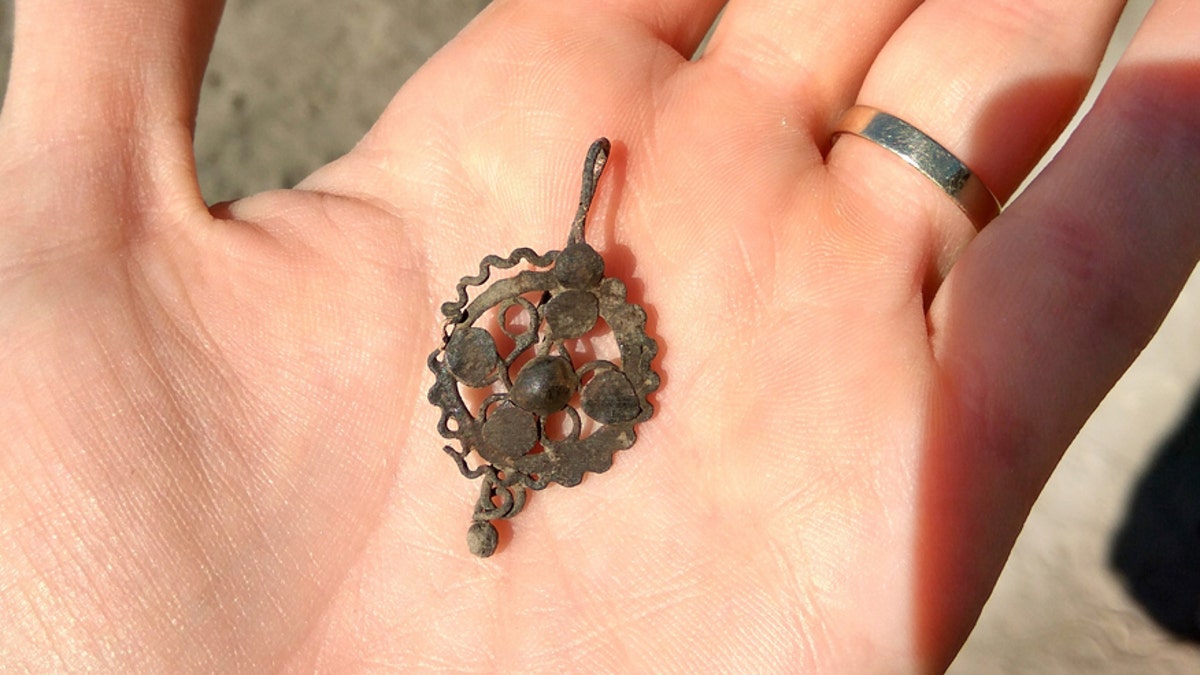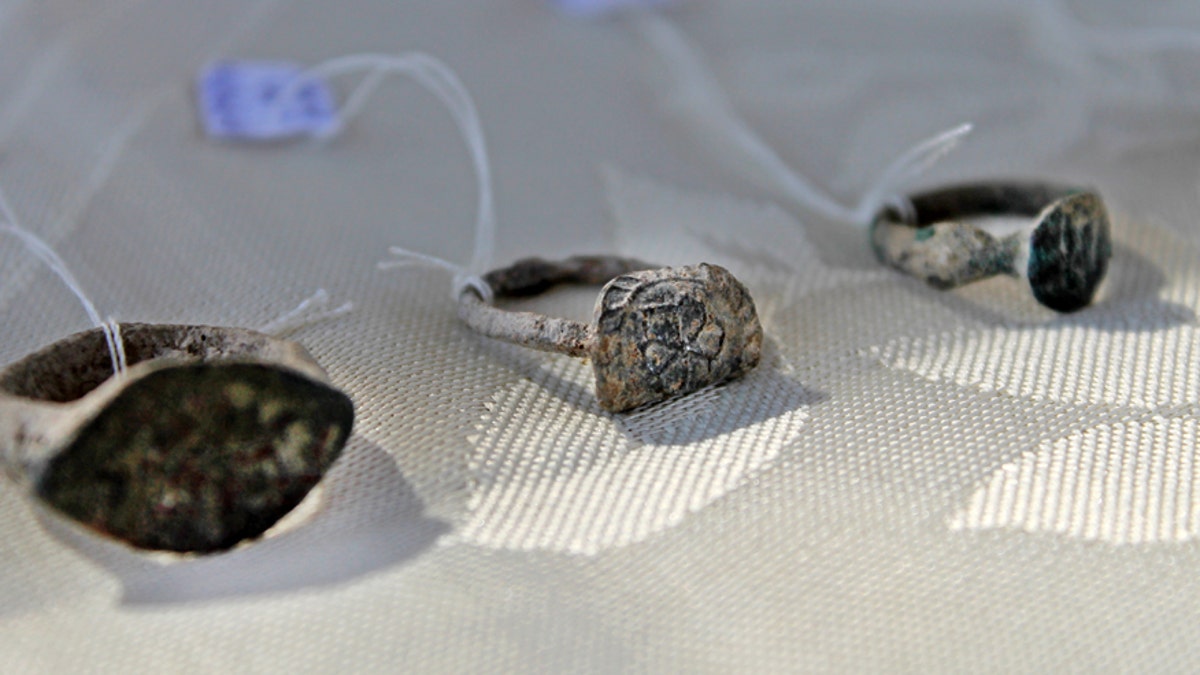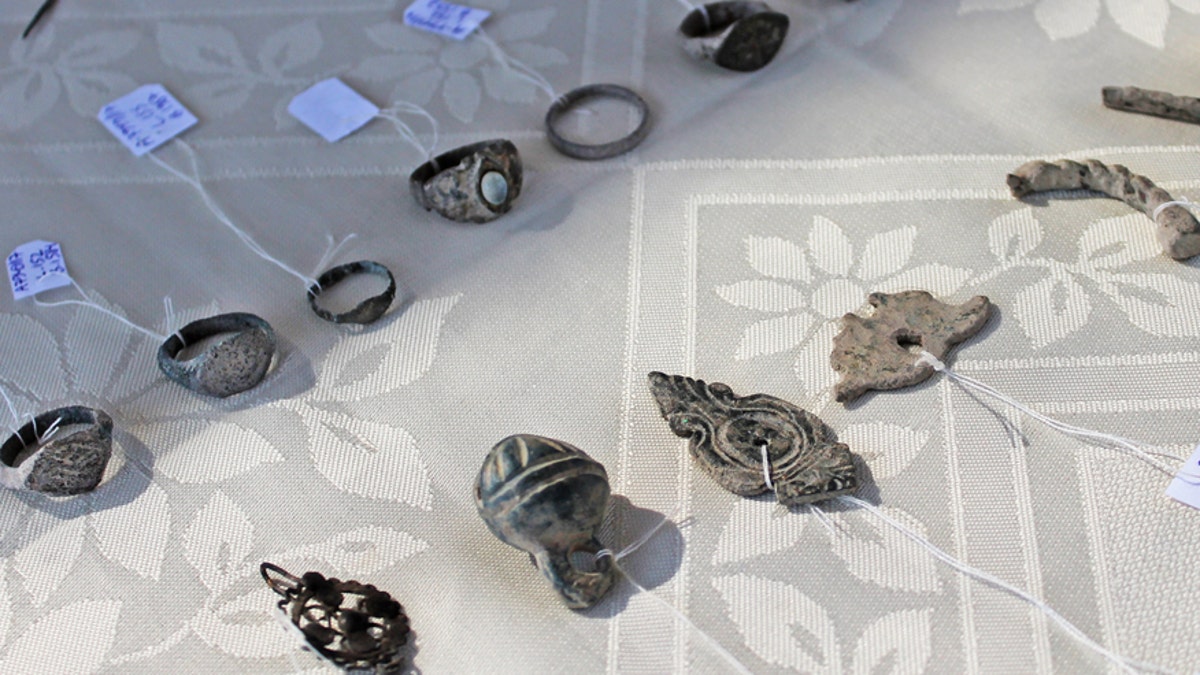
Women’s jewelry found in the kitchen in the Crusader tower. (Vered Bosidan, Israel Antiquities Authority)
Lost an earring in the kitchen? Don’t get upset. Wait 900 years or so and somebody’s sure to find it.
That's what’s happening in Israel, where 2,500 schoolkids have been participating, one class at a time, in the excavation of a Crusader fortress on Tittora Hill, 20 miles northwest of Jerusalem in the town of Modi’in-Maccabim-Re’ut.
EXPERTS DISCOVER 'CHRISTOPHER COLUMBUS' ANCHOR AT CARIBBEAN SHIPWRECK SITE
The fourth- to 12th-graders have uncovered some amazing artifacts — rings, bracelets, earrings and hairpins — among the ancient clay ovens, cooking pots, jars, serving dishes and a table in the medieval fortress’ kitchen. They also found the remains of food, including olive pits, charred grape pips and animal bones.


“The students and volunteers from Modi’in have exposed the inner courtyard of the Crusader fortress,” said Avraham Tendler, excavation director for the Israel Antiquities Authority. “Here, the fortress’ occupants cooked and baked for hundreds of years during the Middle Ages, some 900 years ago.
“It seems that the cooks of the time were not sufficiently careful with the jewelry they wore while cooking and baking, since numerous pieces of jewelry have been found in the excavation, some made of bronze and silver.”
AFTER 'REAL DETECTIVE WORK,' A THEORY ON GOYA'S MYSTERIOUS ILLNESS
“Throughout the entire site, we have found many metal objects, including coins, rings, bracelets and cosmetic tools,” said volunteer archaeologist Mati Yohananoff. “These finds indicate the kind of activity traditionally associated with women’s domestic work.”
Modi’in residents who have joined the volunteers are exploring the foundations of the fortress and exposing a large building from the Roman period hidden beneath it.
Previous excavations on Tittora Hill have revealed evidence of its occupation from the Chalcolithic period (4,000 B.C.) to the modern era. The hill, strategically located on the main ascent route from the coastal plain to Jerusalem, is surrounded by fertile valleys that were used for farming and supported the inhabitants for millennia.
“Tittora Hill symbolizes the connection between ancient Modi’in and the glorious history of this part of the country, and the modern city that exists today,” said the town’s mayor, Haim Bibas. “The hill contains many historical and archaeological finds.”